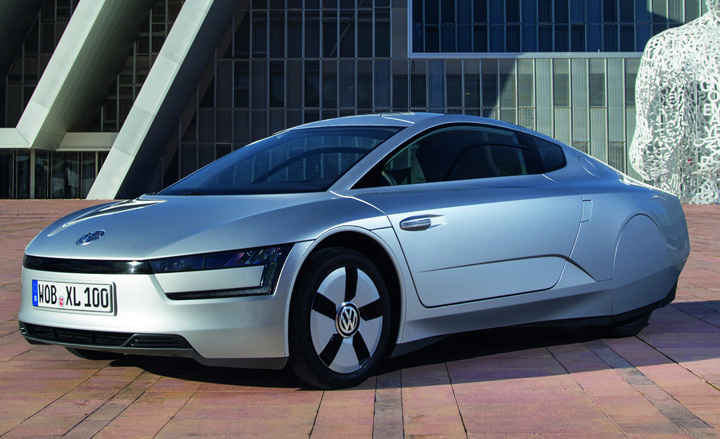
No-one can accuse the VW XL1 of being 'just another car'. Looking like a tiny road-going spaceship, the aerodynamically-optimised plug-in hybrid eco supercar offers a world-beating 313mpg, is production-ready and goes on sale later this year for circa £50,000. Really.
The XL1 production car may look supersonic - its top speed is actually 100mph - but it was far from a high-speed development. The car's roots can be traced back to the 2002 tandem-seater, '1-litre' prototype, because it could travel 100km on only one litre of fuel (equating to 285mpg). 11 years and numerous concepts later, the bigger XL1 - a staggered two-seater where the driver sits slightly forward of the passenger - was unveiled in showroom-ready form at the 2013 Geneva motorshow.
When driven around London, its sleek shape attracted attention everywhere it went from young to old, and male to female. As its exterior designer Peter Wouda points out: 'It causes extreme emotional reactions like you'd get with a Ferrari or a Lamborghini but without the jealousy. We wanted a self-confident design but without the aggression.' Some design observers might even consider it 'retro-futuristic', given the Star Wars-esque white gloss bodywork, plus its covered rear wheels and sloping roof akin to a 1950s Citroen DS (or indeed a 1970s Citroen SM).
Either way, Wouda says all the curves and creases on the exterior have function, and help the car to an incredibly low 0.189 drag co-efficient (the best current production model is the Mercedes CLA at 0.23Cd). Helping that aerodynamic cause are rear-facing cameras integrated into the doors that relay images back to two interior door video screens to allow the driver to check rearward vision and replace big conventional wing mirrors (and their associated drag). The idea has been showcased on concept cars for years, but crucially, these cameras pass the necessary road-going legislation and should set a precedent for more streamlined, mirror-less cars in the future.
Another part of the XL1's pioneering design is its use of lightweight materials. The chassis, body panels and bucket seats are all made with carbon fibre reinforced plastic (CFRP), wheels are magnesium and the manual-opening side windows are polycarbonate. The result is a 795kg kerb weight, less than the current Lotus Elise. Despite this weight-watching, the cabin is far from stripped-out, and has air-conditioning and quality finishing.
Powering the VW Polo-sized car is a rear-mounted 0.8-litre diesel-engine that combines with an electric motor to offer 75hp, 313mpg, 21g/km CO2 and a 31-mile electric-only range. When that's spent, or when accelerating above 25mph, the diesel engine kicks in to help, in a rather raucous way Wouda likens to 'an angry dog' - normal noise-cancelling insulation has been left off to keep weight down.
Driving impressions limited to the city and mainly in EV mode are overwhelmingly positive. Steering has no power assistance but given the car's light wheels and overall size, it's not hard to manoeuvre, the bucket seats are firm and surprisingly comfortable and the 120-litre boot space will take a few bags. The rear-view screens in the cabin doors help identify bicycles and buses equally well, but reversing into poorly-lit parking spaces is tricky, as the camera images can be too dark to be clear.
The functionality of the traffic-stopping gull-wing doors, however, is good. Hinged well into the ceiling, they create a bigger and higher aperture where conventional side-hinged doors on a car as low as the XL1 would cause real problems. The staggered two-seat layout is nicely convivial as well, allowing six-footers to sit in comfort and chat easily.
Best of all, as mentioned at the start, this technology-laden masterpiece is due on sale in late 2013 for a relatively reasonable £50,000 (the price is not yet fixed and VW will lose money on all of them). 250 are initially due to be built, although VW says it could build up to 5000 and while a few hundred (or even thousand) eco supercars won't change the world, the project's importance lies elsewhere. VW says its myriad ground-breaking technologies really can be filtered down to cars as commonplace and affordable as the Golf in time - and if they do - the XL1 just might go down in history as the small eco car that started something big.
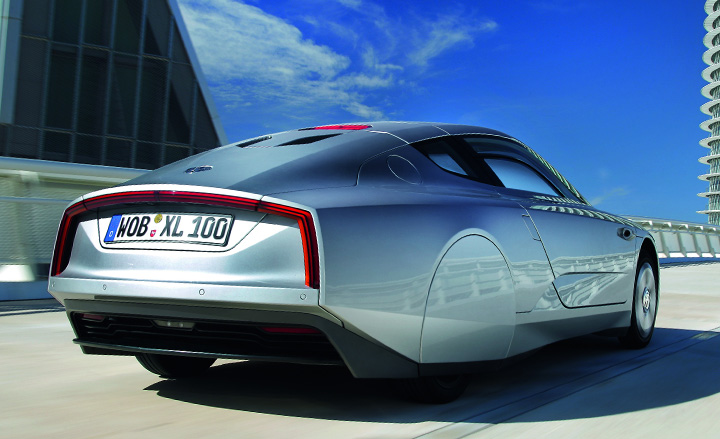
The car's roots can be traced back to the 2002 tandem-seater, '1-litre' prototype, because it could travel 100km on only one litre of fuel (equating to 285mpg)

11 years and numerous concepts later, the bigger XL1 - a staggered two-seater where the driver sits slightly forward of the passenger - was unveiled in showroom-ready form at the 2013 Geneva motorshow
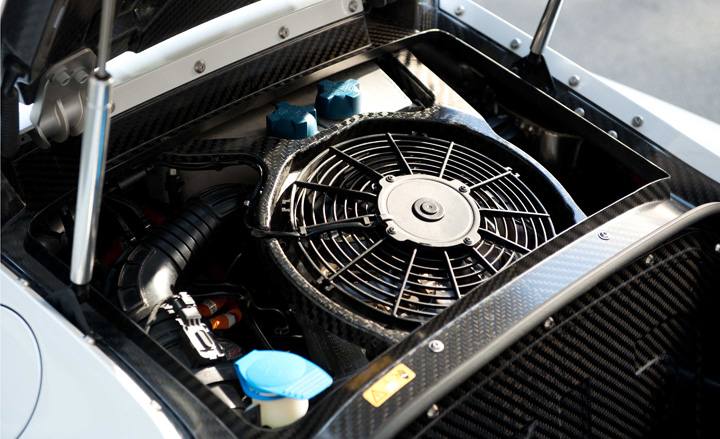
Powering the VW Polo-sized car is a rear-mounted 0.8-litre diesel-engine that combines with an electric motor to offer 75hp, 313mpg, 21g/km CO2 and a 31-mile electric-only range
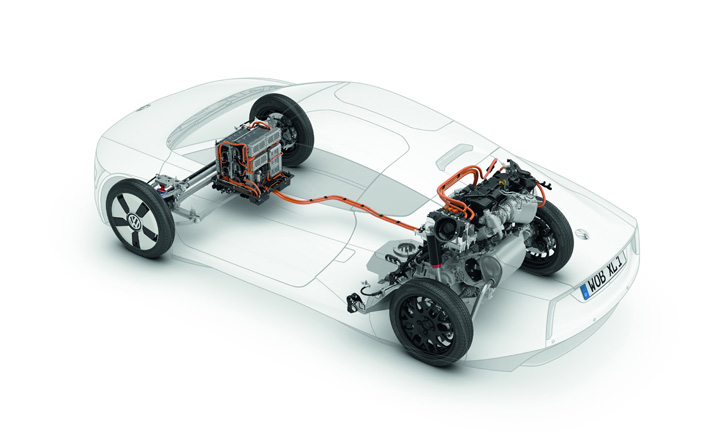
A powertrain diagram of the XL1

The aerodynamically-optimised plug-in hybrid eco supercar offers a world-beating 313mpg
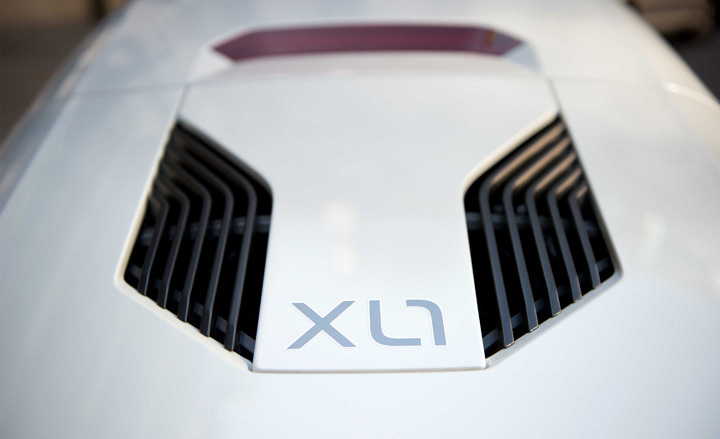
VW says its myriad ground-breaking technologies really can be filtered down to cars as commonplace and affordable as the Golf in time - and if they do - the XL1 just might go down in history as the small eco car that started something big. Pictured are the car's rear engine vents
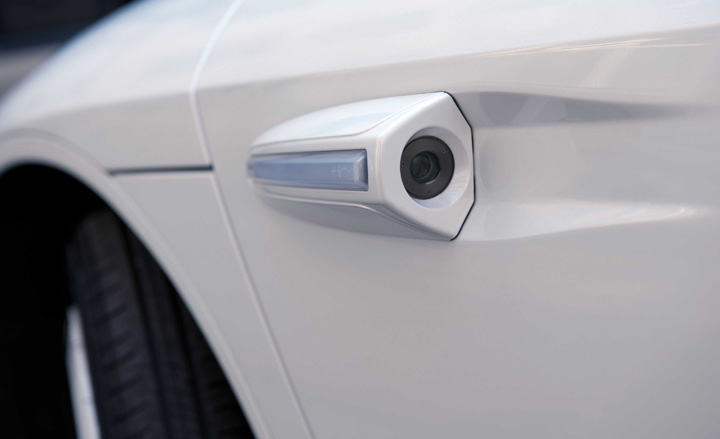
Helping that aerodynamic cause are rear-facing cameras integrated into the doors that relay images back to two interior door video screens to allow the driver to check rearward vision and replace big conventional wing mirrors (and their associated drag)

The idea has been showcased on concept cars for years, but crucially, these cameras pass the necessary road-going legislation and should set a precedent for more streamlined, mirror-less cars in the future

The rear-view screens in the cabin doors help identify bicycles and buses equally well, but reversing into poorly-lit parking spaces is tricky, as the camera images can be too dark to be clear
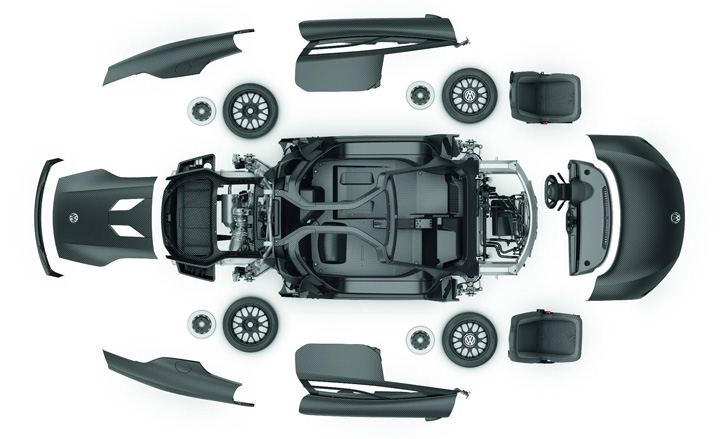
Another part of the XL1's pioneering design is its use of lightweight materials. The chassis, body panels and bucket seats are all made with carbon fibre reinforced plastic (CFRP), wheels are magnesium and the manual-opening side windows are polycarbonate. Pictured, is an 'exploded' diagram of the XL1
Receive our daily digest of inspiration, escapism and design stories from around the world direct to your inbox.
Guy Bird is a London-based writer, editor and consultant specialising in cars and car design, but also covers aviation, architecture, street art, sneakers and music. His journalistic experience spans more than 25 years in the UK and global industry. See more at www.guybird.com
-
 Usher opens up about breakfast playlists, banana pudding and why a glass tumbler is always on his rider
Usher opens up about breakfast playlists, banana pudding and why a glass tumbler is always on his riderOn the heels of a collaboration with Baccarat, the Grammy-winning singer-songwriter breaks down his entertaining tips. 'Hosting is an expression of how you feel about your guests and also who you are.'
-
 The beauty trends that will define 2026, from ultra-niche fragrances to anti-ageing dental care
The beauty trends that will define 2026, from ultra-niche fragrances to anti-ageing dental careAs we enter the new year, we speak to experts in fragrance, skincare, aesthetics, wellness and more about the trends that will be shaping the way we look
-
 The most stylish hotel debuts of 2025
The most stylish hotel debuts of 2025A Wallpaper* edit of this year’s defining hotel openings. Design-led stays to shape your next escape
-
 All the new electric cars and concepts revealed at Munich’s IAA Mobility 2025
All the new electric cars and concepts revealed at Munich’s IAA Mobility 2025Munich’s alternative motorshow is now in its third iteration, combining a traditional exhibition space with a conference and large-scale public activations on the streets of the city
-
 The top 10 concept cars of 2024, as selected by Wallpaper’s Transport Editor
The top 10 concept cars of 2024, as selected by Wallpaper’s Transport EditorWe round up our favourite forays into futuristic design with this collection of concepts and design studies showcasing the transport of tomorrow
-
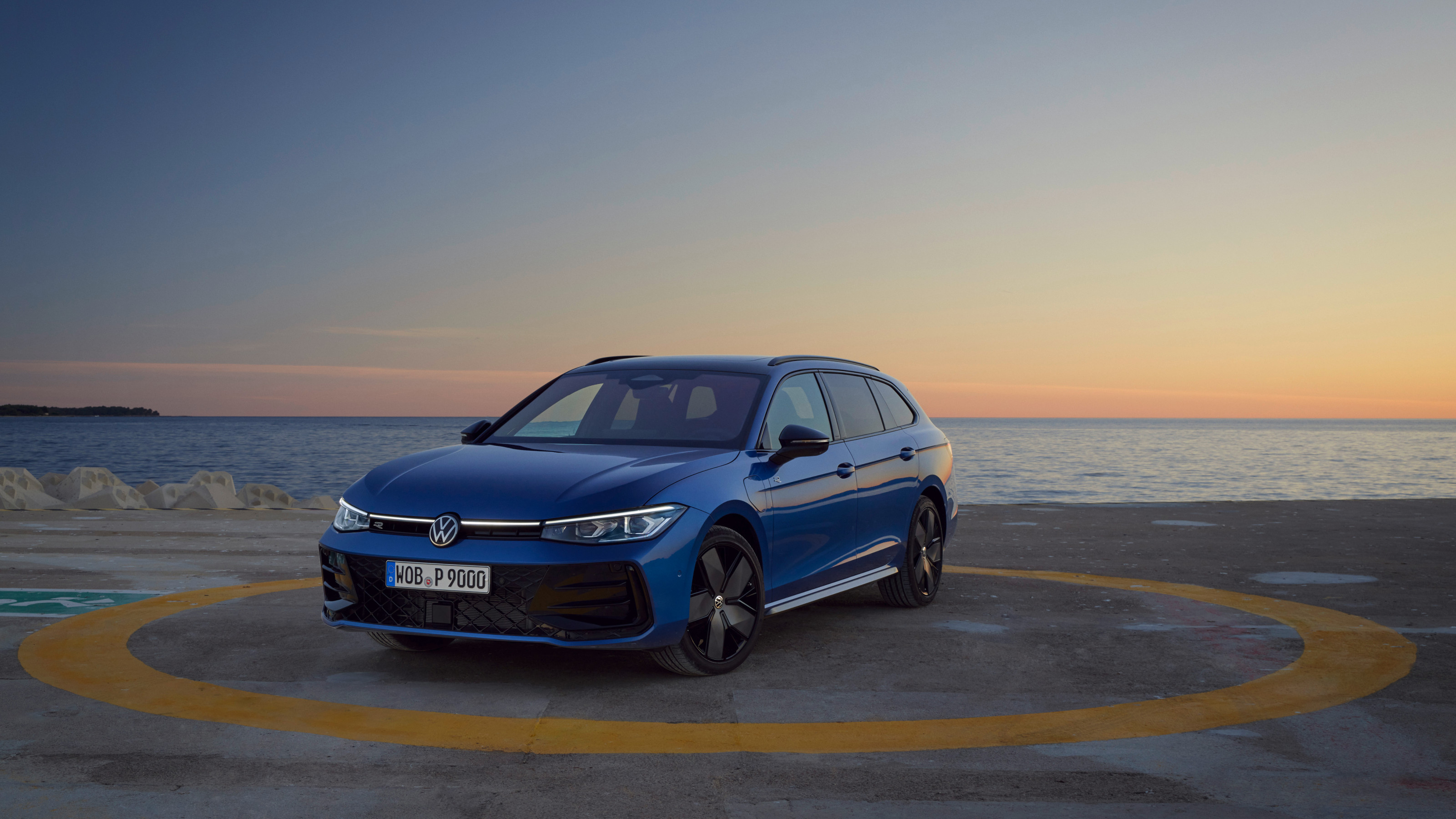 The Volkswagen Passat is a sober, straight edged estate car that feels increasingly out of time
The Volkswagen Passat is a sober, straight edged estate car that feels increasingly out of timeWhy would anyone pass on a Passat? Volkswagen’s big load lugger proves that the old ideas are still the best
-
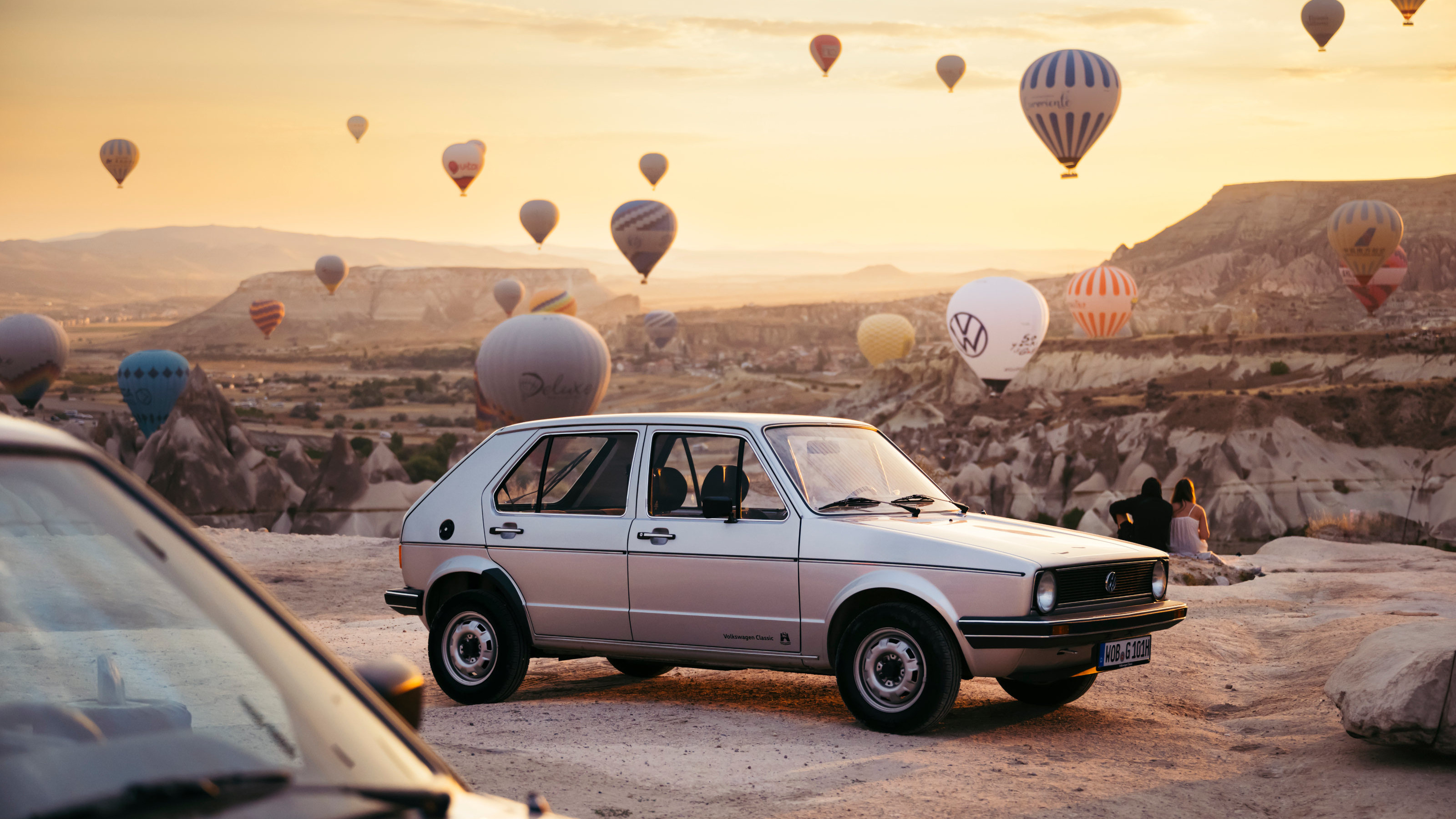 Volkswagen celebrates 50 years of the Golf, its most famous modern model, with a flight of fancy
Volkswagen celebrates 50 years of the Golf, its most famous modern model, with a flight of fancyWallpaper* travelled to eastern Turkey in search of the perfect backdrop to mark 50 years and eight generations of the evergreen VW Golf
-
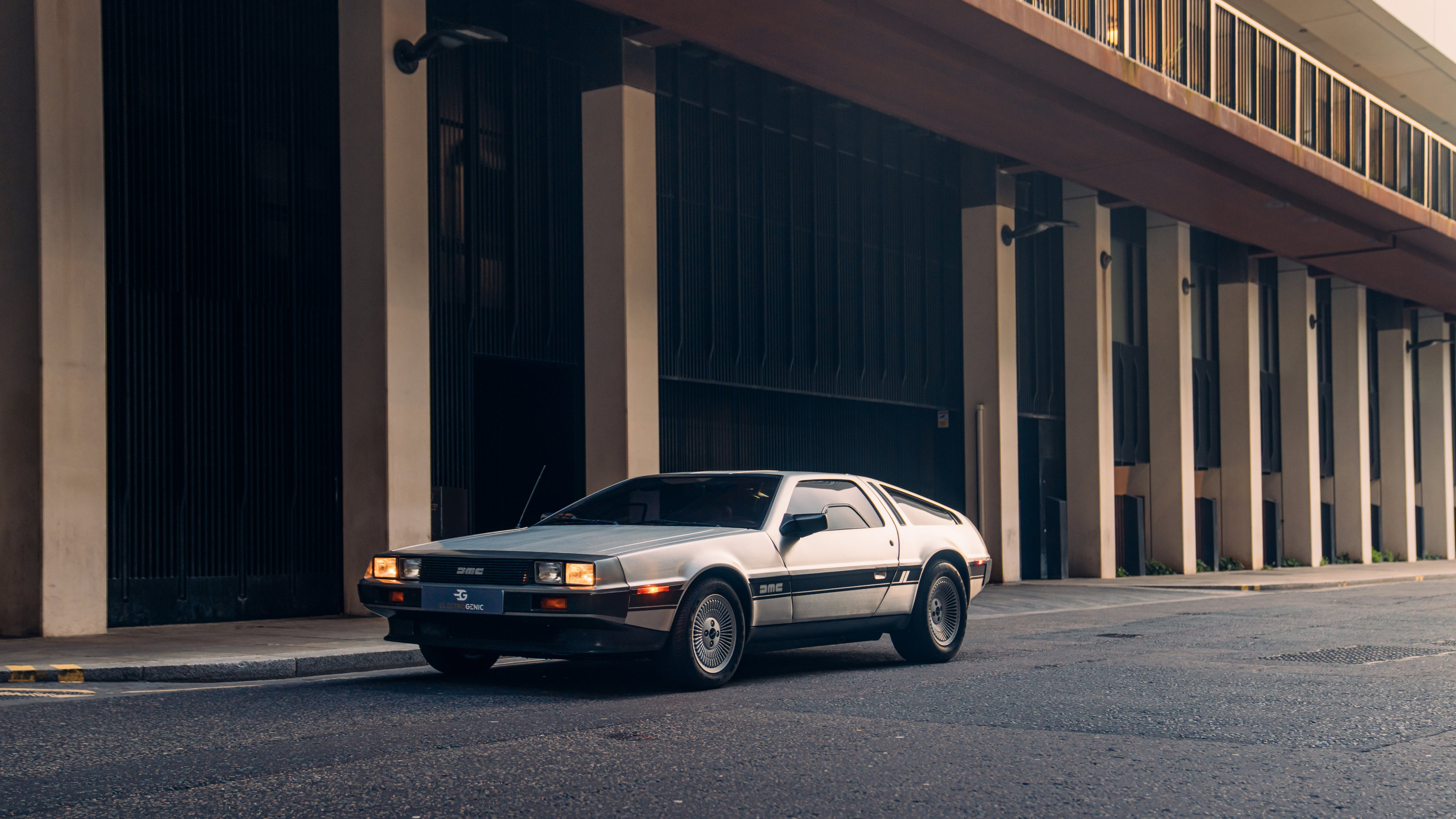 We sample the world’s first all-electric DeLorean, a stainless steel marvel for the modern age
We sample the world’s first all-electric DeLorean, a stainless steel marvel for the modern ageElectrogenic brings its brilliance with batteries and motors to bear on the iconic DeLorean DMC-12, giving this classic design the futuristic feel it deserves
-
 Bentley rolls out the latest version of its majestic grand tourer, the Continental GT Speed
Bentley rolls out the latest version of its majestic grand tourer, the Continental GT SpeedAvailable as both coupé and convertible, the fourth generation Bentley Continental GT Speed harnesses hybrid power to become a record breaker for the brand
-
 Fiat Grande Panda first look: will retro-seeking lightning strike twice?
Fiat Grande Panda first look: will retro-seeking lightning strike twice?This is the new Fiat Grande Panda, a compact hybrid and electric car that brings delightful design back to a well-loved model
-
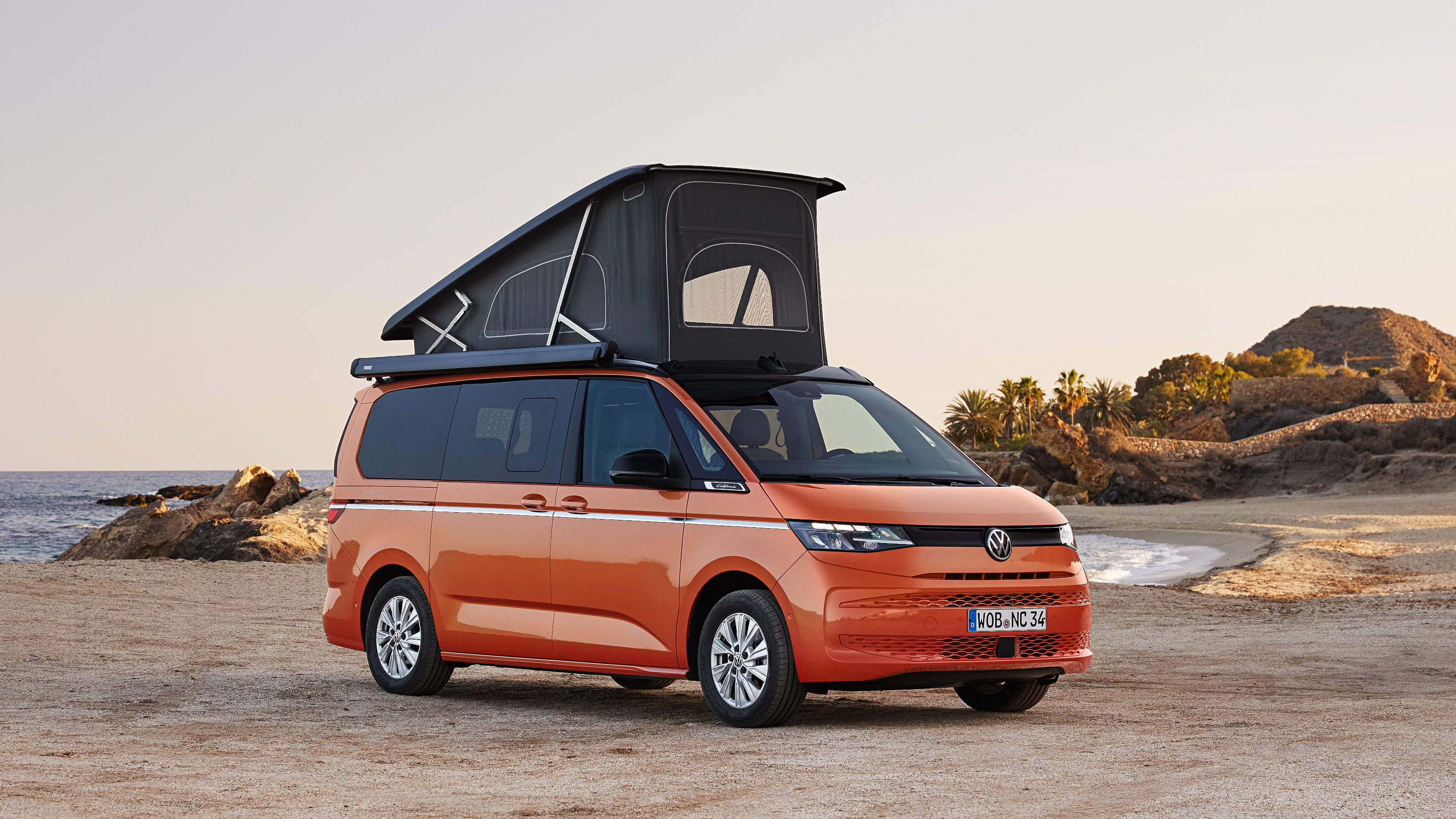 New Volkswagen California is a hybridised camper van that has it all
New Volkswagen California is a hybridised camper van that has it allThe Volkswagen New California camper van is here, the latest update to VW’s evergreen classic, bringing a larger platform, more flexibility and hybrid power for the first time